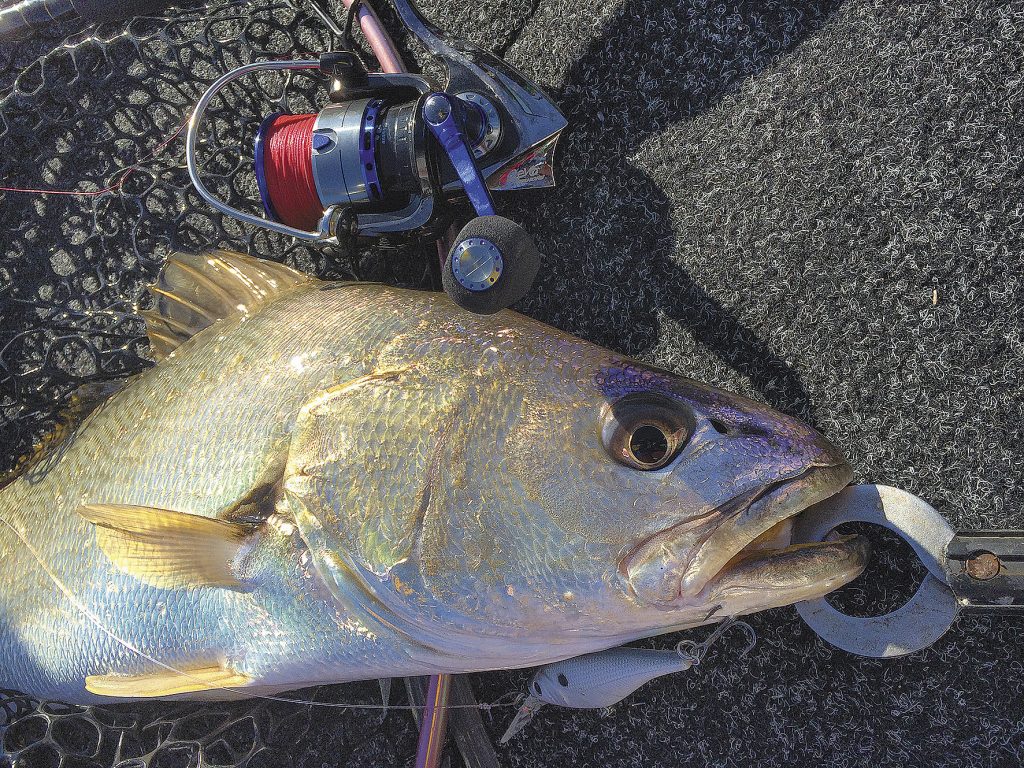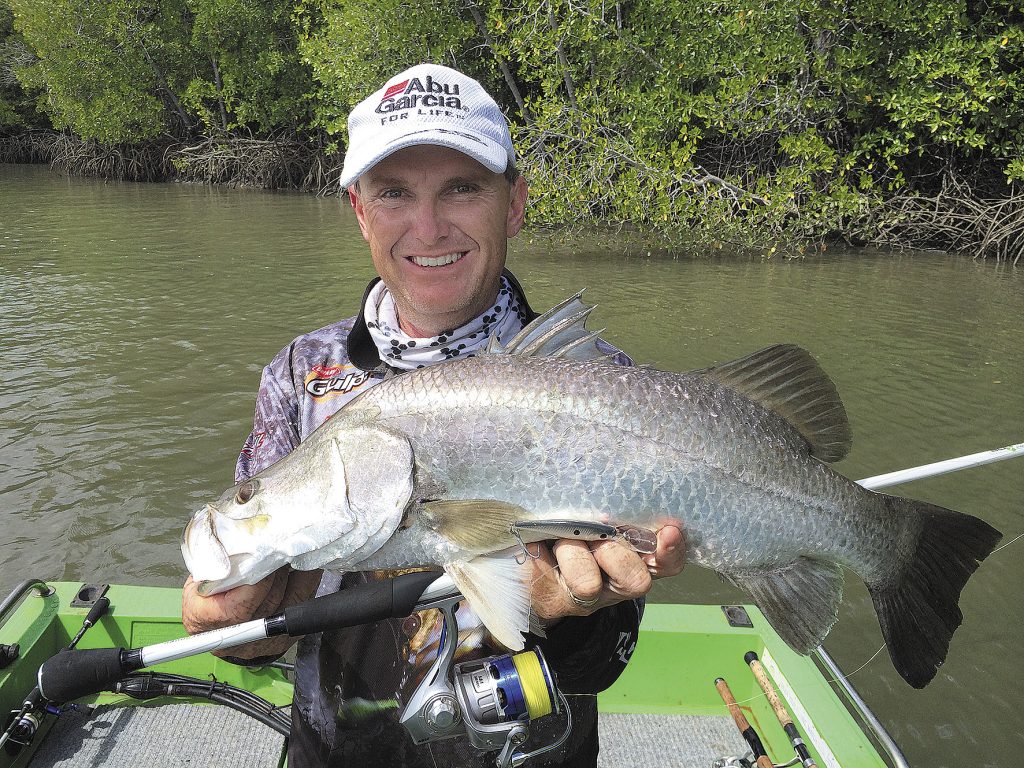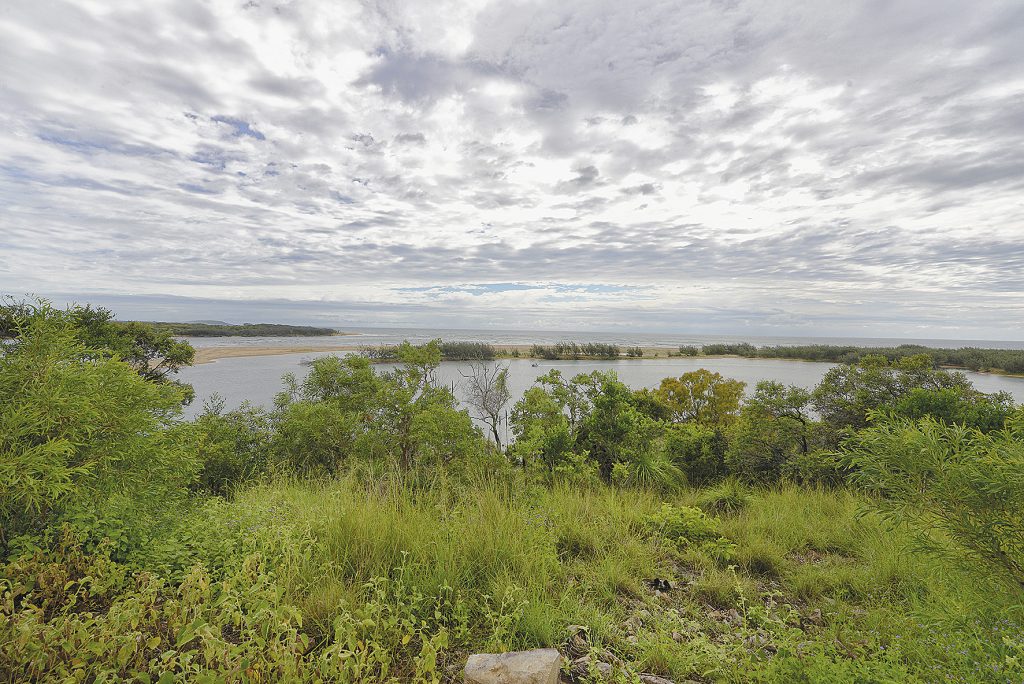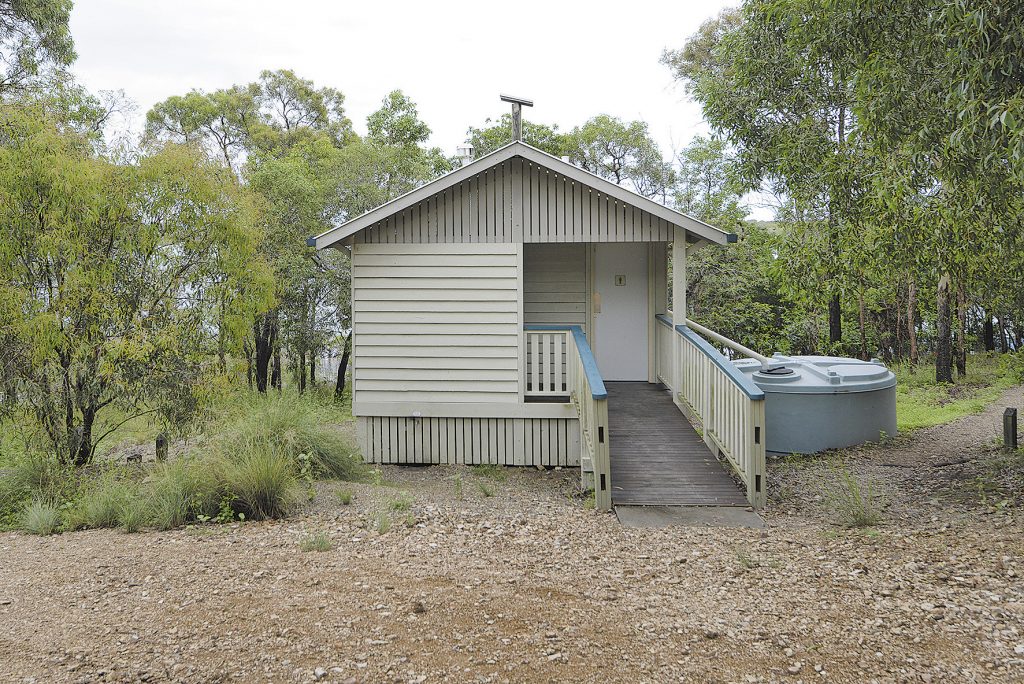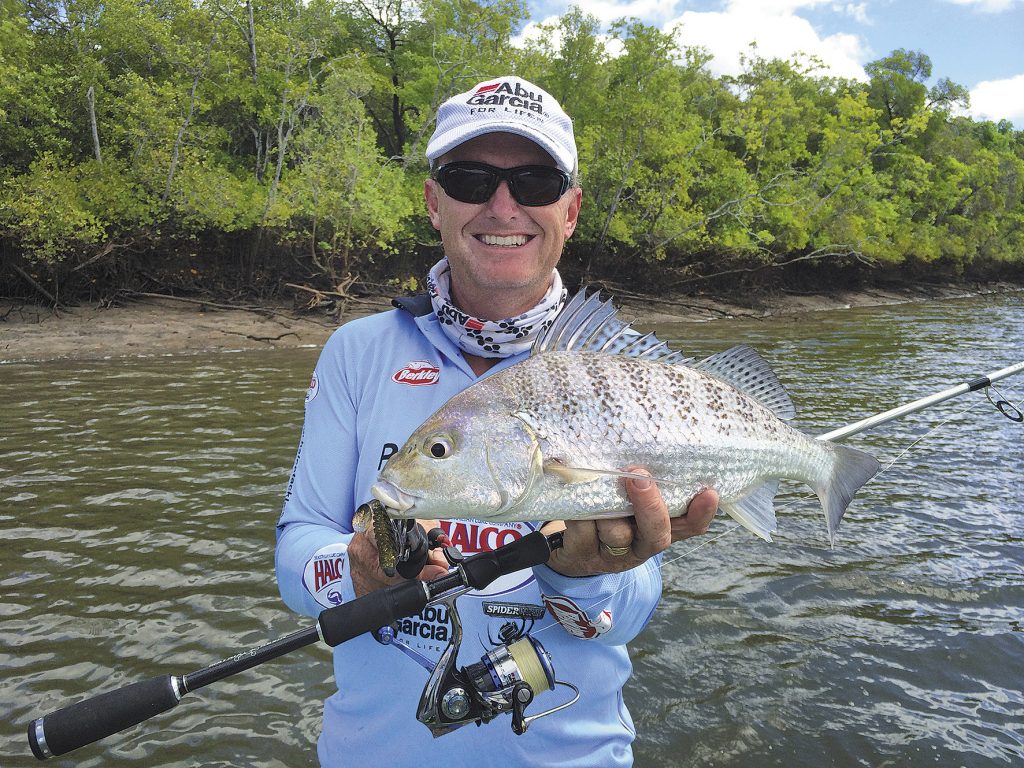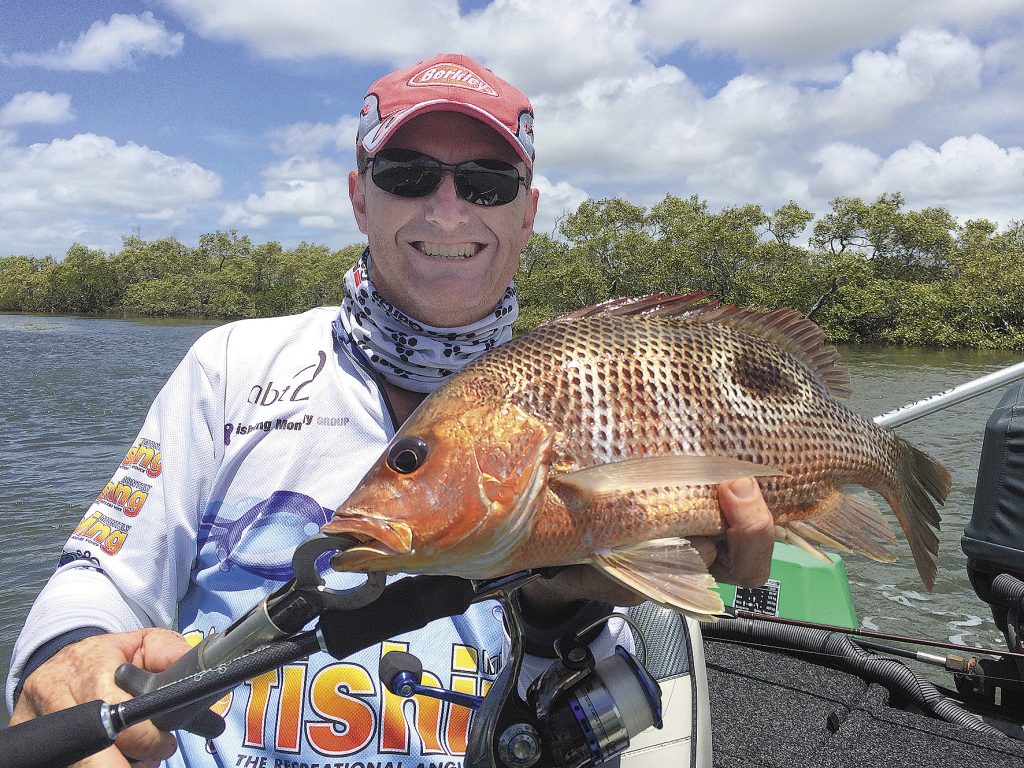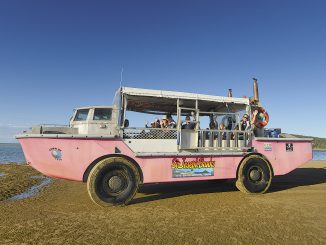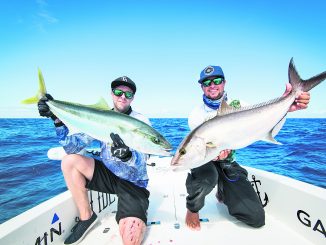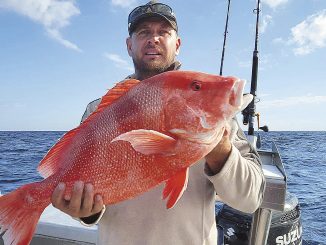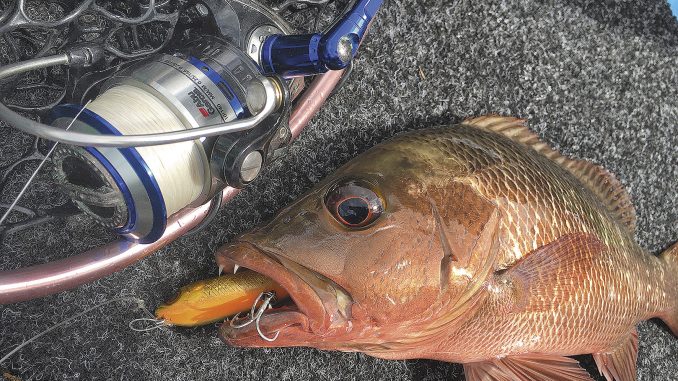
by Jason Medcalf •
For many years 1770 has been the jewel in the crown of the Coral Coast, with its beautiful scenery and piscatorial diversity. The area has much to offer the traveling angler, from amazing reef fishing for coral trout, mackerel and everything in between to a maze of rivers and secret creeks that hold iconic sportfish like barramundi and mangrove jack.
In this article I’ll take you through the productive rivers and creeks in the area, and give you a guide on where, when and how to catch a fish in this great location.
Round Hill Creek
The closest system to the main area of accommodation is Round Hill Creek. This system has an all tide boat ramp located on Captain Cook Drive in 1770. When I say it’s an all tide ramp I’m talking about small craft that would be fishing the creek rather than heading offshore, as on the big low tides there’s not a lot of water in the channel around the ramp.
There is a large car park across the road from the ramp, which is very safe to leave your car and trailer. Just be aware that when the weather is good the locals in their bigger boats heading offshore can fill the car park pretty quickly.
There is a marina with a small shop that sells hot food and fresh seafood there, which is handy if you don’t catch anything and still want a feed of fresh fish or prawns.
The boat ramp is located around 1km or so from the mouth of the creek. You can travel 5km upstream on the high tides in a small boat so it’s not a huge system, but it’s still very productive.
The main target species in this system are bream, whiting and flathead, with of course mud crabs being a mainstay as well. The large sand flats in this system make it ideal whiting and flathead country, and fresh yabbies pumped locally in the creek at low tide are the gun bait. Flathead often hunt whiting too and fall victim to a well presented soft plastic or trolled small hardbodied lure.
Round Hill Creek is famous for throwing in big surprises when it comes to fish species as well. The creek runs out into some pretty deep water so there are a lot of pelagic species that come in and hunt the shallows and the deeper holes as well. Queenfish, mackerel and giant trevally chase the schools of baitfish that come into the creek at different times of the year. These predators can be very large, with metre long queenfish and 10kg trevally common when gathering baitfish are in the creek.
The main places you will encounter these rampaging pelagics are around the deeper holes near the rocks heading to the mouth, on the flats at high tide chasing baitfish and up the creek in the deeper holes and against the edges of the mangrove channel. If you come across these fish feeding (usually you find that out when you see baitfish jumping out of the water trying to escape), it’s a good time to tie on a surface popper or high speed slug. The surface popper imitates the baitfish jumping out of the water, and queenfish and trevally just love surface lures.
If you’re using a high speed slug, just cast it in their general direction, let it sink for a few seconds and then wind like crazy. The slug moving through the water at high speed excites the fish and can get them to chase and then eat your offering, usually at high speed themselves. It makes for a great hook-up and fight.
Further up the creek system, the sand flats slowly give way to mud flats. Here the species mix changes a little, with bream, cod, Moses perch and grunter that like to eat fresh yabby or prawn offerings. The creek meanders its way inland for 10km or so, and as you make your way upstream you really need to keep your eyes open. There are a few rock bars and shallow sand bars so be careful not to get stuck on an outgoing tide. Sitting and waiting for the tide to come back in with the company of thousands of sandflies is nobody’s idea of fun!
If you are keen to target mangrove jack and barramundi, the last of the outgoing tide and the first of the incoming has proven to be the best for me in this creek. There are several creeks that run into the main creek, and it also splits in two right up the top of the system. I like to fish the junctions where these small creeks meet the main creek because the junctions are like roundabouts, where fish travelling up and down the system like to hang around and hunt.
When you’re specifically targeting mangrove jack, look out for those fallen mangroves that are left in the water during the last of the tide. Also, when you see rock make sure you fish it, as mangrove jack really should be called ‘rock bar jack’ in our region. They just love hanging around rock and ambushing their prey as the baitfish try to sneak over and around the rocks.
Roundhill Creek is a great creek for those travelling anglers who like a fairly safe area that can be fished year round, and can give up a feed on most trips. Whiting and flathead are the most available species, and targeting them doesn’t require too much homework. And with every type of accommodation, from a 5-star resort to caravan park tent sites only minutes away from the boat ramp, this creek is a great option.
Eurimbula creek
Eurimbula Creek is located north of 1770 and is reached by a dirt road through Eurimbula National Park (just follow the signs). The road can be impassable during the wet season but will usually be close by the rangers if it is dangerous.
The creek is a small, shallow system that winds its way inland and has some nice lagoons that hold small barramundi and mangrove jack. You cannot take crab pots into this creek as it’s closed to crabbing, which works well as the surrounding creeks do crab very well. This creek has a small boat ramp and, because it can be very shallow, a small boat or kayak is mandatory.
You can camp at the mouth of the creek but you will need to book and pay for your stay with National Parks, which is easy to do online. There are toilet amenities in the camping area and it’s a great site with plenty of shade and a beautiful breeze off the ocean.
The creek itself can produce some great fishing, and the sand flats produce whiting and flathead and the main creek offers up bream, cod, mangrove jack and grunter. Low tide will have you sticking to the main channel, and that can be very shallow, but as the tide drops the fish move into what water is left so finding spots to fish is relatively easy.
All in all, if you’re a keen kayaker who likes to troll a few lures while you paddle, this is a great creek. I have caught all sorts of species while paddling up the creek trolling small lures. So far I’ve caught small trevally, queenfish, grunter, cod and of course mangrove jack in the more permanent water upstream.
Middle Creek
Further north of Eurimbula along the same track is Middle Creek. This is one of my all-time favourite areas and I fish it very regularly. It produces fish pretty much year round and has a diverse range of species in a challenging environment. Middle Creek is pretty much a maze of rock bars and sand bars mixed with only a few deep water areas.
The camping area here needs a permit, and you can go online for that. You just print out the permit and place it on your tents. There is a long drop toilet there for those brave souls who feel the need, but it is kept very clean and tidy by the local ranger patrol. There’s a limited number of camp sites at Middle Creek itself, and during busy holiday periods it can get a bit crowded.
Alternatively you can throw your camping gear in your boat and head through the creek into Pancake Creek and camp on Rhodes Peninsula (north side) or Bustard Head (south side). Both spots have no amenities so it’s self-sufficient camping with world class views.
Back in Middle Creek, the rock bars dominate the fishing and boating, and low tide can mean sitting where you are until the tide rises again. I have found out over the years this can be a great way to fish as the small channels left certainly hold plenty of fish.
The mouth of the creek at high tide can be dangerous in a small boat when the southeasterlies are blowing hard, so it’s best not to venture that way while its windy. Alternatively, when the weather is calm and the tide is right you can quickly cross the bar and head out to fish Bustard Head from here. As we are talking creek fishing I will have to leave the awesome fishing around Inner and Outer rocks for another article.
Middle Creek produces many species including your bread-and-butter bream, whiting and flathead year round. However, it’s the mighty mangrove jack that fires me up to fish this area. I highly recommend spending some time studying the Google Map of this area if you’re planning a trip. When you zoom into the creek you’ll find that pretty much everything that doesn’t look like sand is rock. This is not meant to scare you off, just to prepare you for some of the unseen hazards of this area. The many rock bars all but disappear at high tide and the place looks awesome and safe, but as that tide drops you need to take care.
The jacks just love the rock in this creek. There are two main areas of rock; the one which we call The Gates is on the Middle Island side of the creek, and the other is the Cut Through which is where the back creek cuts back into the main creek.
The Gates has changed over the years. It used to be very deep (around 50ft) years ago and it held coral trout, sweetlip and other juvenile reef fish. Nowadays it maintains a depth of around 20ft at low tide and can hold some big barramundi, schools of mangrove jack and at times some voracious pelagics. At times the bank heading towards the mouth on the northern side can be alive with hardiheads, and when they are in giant trevally and queenfish will hunt in the creek, which makes for some great fun on estuary fishing tackle.
The rock bar that runs down the middle of the creek that joins the back creek with the main creek can be a mission to fish, but if you put some time into it you can catch just about everything that swims in this neck of the woods. The rock bar has a various ledges running along it and I like to fish surface lures for mangrove jack as the tide pushes over the ledge. I also like to sink soft plastics down into the dark crevices, searching out those aggressive red fish.
Pancake Creek
To get to Pancake Creek you can travel by boat through Middle Creek or you can drive to the crossing through the Turkey Beach road and launch when the tide is right. Pancake is a very beautiful creek with lots going for it, with a shallow reef system in the mouth and deep water access to some great reef fishing. Again I could write a whole feature just on this system but for now I will give you just a teaser.
Pancake Creek has vast sand flats that at high tide can hold schools of golden trevally, queenfish and permit for those mad keen sportfishers. At low tide the creek can become impassable and you will find yourself stranded if you have ventured too far up the creek. I do like to lock myself in in this creek as you can walk and fish the many holes you can’t get to by boat through the shallow water. These holes hold fingermark, mangrove jack, barramundi and some big estuary cod, and at that time of the tide they are very hungry and take hardbody and soft plastic lures with vigour. There are also some sneaky spots that are perfect for kayakers at low tide, and can put you in some great fishing country.
Deepwater Creek
In my many years of writing I have never even mentioned Deepwater Creek because I wanted to keep this gorgeous little creek to myself. Nowadays however, it’s no longer a secret and I feel after 20 years of fishing it I am ready to share!
If you head south along the national park from 1770 you will venture into Deepwater National Park. It’s a sandy track that requires a 4×4 to traverse it. You will cross Deepwater Creek over a causeway and see a magical freshwater creek that hits the salt on a weir just a few hundred meters downstream of the causeway. The creek pretty much meanders its way to the sea, staying relatively the same size all the way until the mouth where it opens up and heads out to sea.
The creek for me is just a great spot to chase mangrove jack, and in the many years I’ve fished it I haven’t caught much else there. It’s a very natural creek with deep water, overhanging trees and submerged logs and snags which all hold mangrove jack. It’s the kind of creek you slip the boat in and start casting lures around straight away, and you do that all day and not fish the whole creek.
My go-to lure in this creek has to be a Tilsan Barra in the pink herring colour. It has probably caught hundreds of jacks in this creek over the years. Its also an awesome surface fishing creek with the jack more than will to hit surface lures most of the day especially in under the abundant cover. Deepwater is another great kayak destination and has provided me with some great sessions on the yak.
Preparation
The Creek systems around 1770 offer a diverse range of species, locations and challenges and if you decide to venture here on a fishing adventure you won’t be disappointed. I suggest doing a bit of homework check maps and tides access and accommodation, it’s a wonderful area but be careful once you have been here you will be very tempted to stay.
Time of the year Species
September-April Best time for mangrove jack, barramundi and fingermark
All year round Whiting, flathead, bream, trevally, cod, Moses perch
Lures
Hardbodied Tislan Barra, Halco laser pro 120, Sebile Koolie Minnow, Flicker Shad
Surface lures Cultiva Tango Dancer, Berkley 70mm Frenzy Popper, Halco Rooster Popper
Soft Plastics Berkley Ripple Shads, Gulp Nemeses, Gulp Shrimp
Live Baits Poddy mullet for your larger fish, sprat for everthing else and of course live yabbies for your whiting

